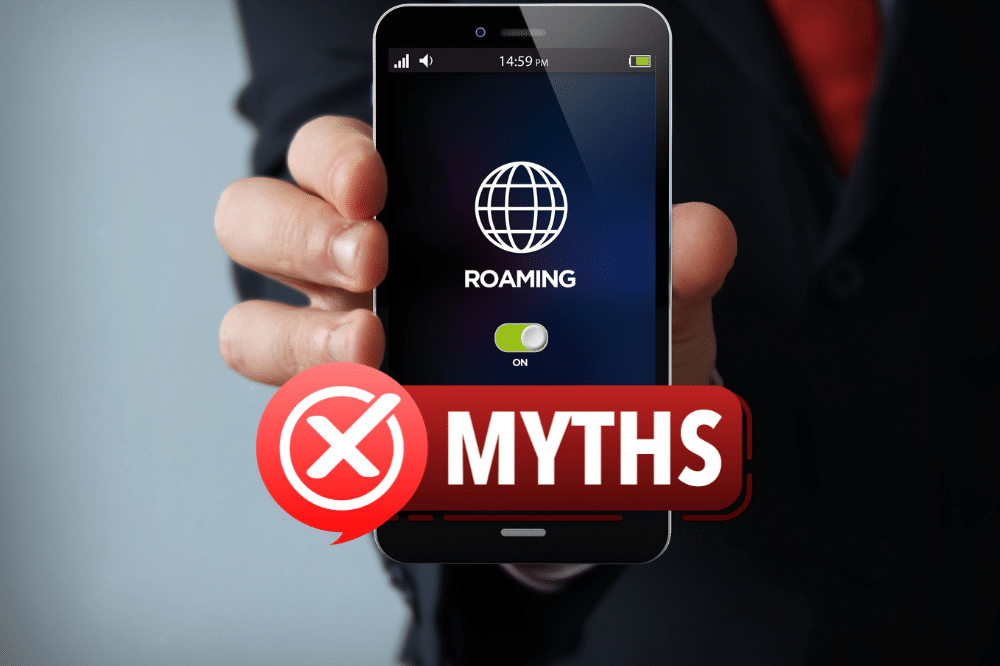Roaming SIMs have been widely misunderstood within the IoT industry, resulting in common misconceptions that have persisted for over a decade.
These misunderstandings often arise from logical, yet flawed, narratives that gain traction through repetition.
Although many who perpetuate these myths do so unknowingly, the outcome is widespread misinformation affecting businesses and end users alike.
Misconception #1: Roaming SIMs Always Connect to the Best Network
The most prevalent misconception surrounding roaming SIMs is that they automatically select the best available network. This is simply not true. Network selection decisions are made by the hardware in which the SIM is placed, such as a vehicle tracker, smart meter, or 4G router, and are governed by the device's internal logic, not the SIM card itself.
Although the SIM stores essential files that aid in determining connection parameters, the hardware's firmware and software control the network selection process.
This is a critical distinction because it highlights that a roaming SIM alone does not ensure optimal network performance.
Misconception #2: Automatic Network Selection Ensures Reliable Connectivity
It is a prevalent misconception that automatic network selection will invariably ensure seamless and reliable connectivity. However, this is not the case for contemporary data-centric IoT applications. Automatic network selection, which is frequently utilized in IoT devices, is fundamentally unsuitable for data applications, owing to the following characteristics:
- Networks are selected at random, as stipulated by the 3GPP TS 23.122 specification.
- Preference is given to previously registered public land mobile networks (RPLMN), while forbidden public land mobile networks (FPLMN) are avoided, even if superior alternatives are present.
- Selection is predicated solely upon signal strength, which does not necessarily correlate with network quality or reliable service.
Many IoT users have encountered instances wherein their devices remain connected to networks exhibiting high signal strength but providing inadequate data throughput or experiencing complete connectivity failures. Given that automatic selection does not consider critical parameters such as round-trip time (latency) or actual data speeds, it is an unreliable methodology for ensuring stable IoT connectivity.
Misconception #3: Any Roaming SIM Will "Just Work"
It's easy to assume that a device will function as expected with a roaming SIM installed. Unfortunately, this is not the case. IoT tech support teams frequently encounter connectivity challenges due to poor network selection, resulting in unnecessary downtime and commercial losses. IoT applications require more than just a basic roaming SIM; they need an intelligent approach to connection management. This involves implementing additional software solutions and optimizing connection settings to ensure the best possible network is used at all times.
The Real Solution: Smarter Connection Management
Addressing the limitations inherent in automatic network selection necessitates that IoT devices possess supplementary intelligence to facilitate real-time adjustments based on empirical network performance. This objective can be realized through:
- Custom Device Engineering: Prioritize the integration of connection control mechanisms during the development of custom devices. Engage module vendors for expert consultation, or secure the services of a consultant to implement advanced network selection algorithms.
- Utilizing Off-the-Shelf IoT Devices: When deploying pre-configured devices, such as meters or telecare systems, ascertain whether the manufacturer has embedded intelligent connection control capabilities.
- Mobile Application Deployment (e.g., Vehicle Trackers): Implement a dynamic network selection protocol for roaming SIMs in mobile environments due to the continuous variability of signal conditions.
- 4G/5G Router Integration: Integrate 4G/5G routers that feature advanced connectivity management solutions, such as Robustel Technologies' "Smart Roaming," which intelligently governs network switching to optimize system uptime.
Conclusion
While roaming SIMs are crucial for IoT connectivity, they are not a universal solution. Understanding the limitations of automatic network selection and implementing intelligent connection strategies is vital for reliable IoT performance.
By selecting appropriate hardware, software, and connection logic, businesses can minimize connectivity issues and maximize the benefits of roaming SIM technology.
For advanced IoT connectivity solutions, including Smart Roaming, explore Robustel IoT Solutions.

